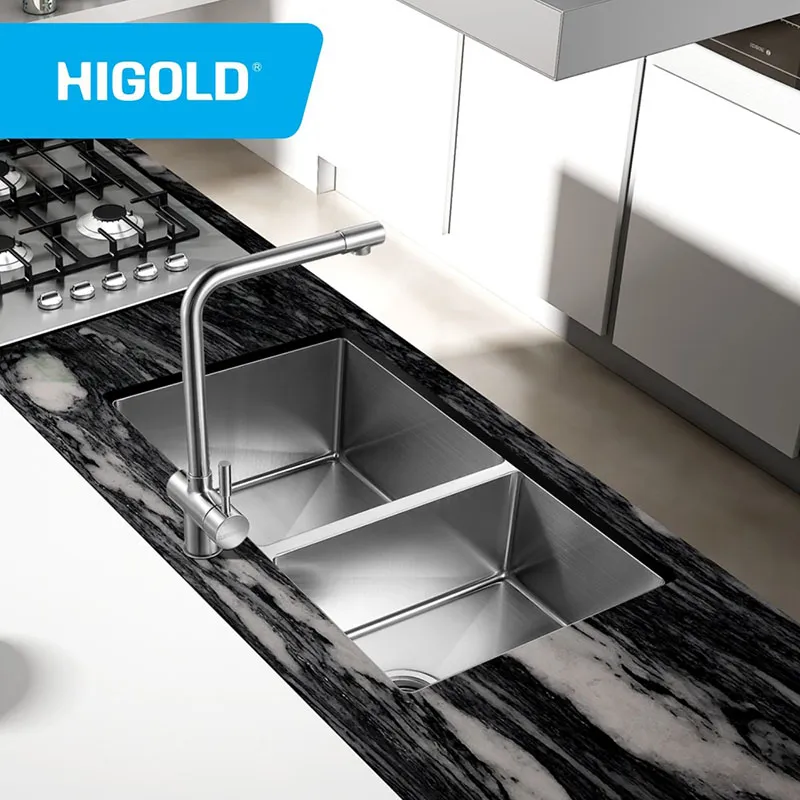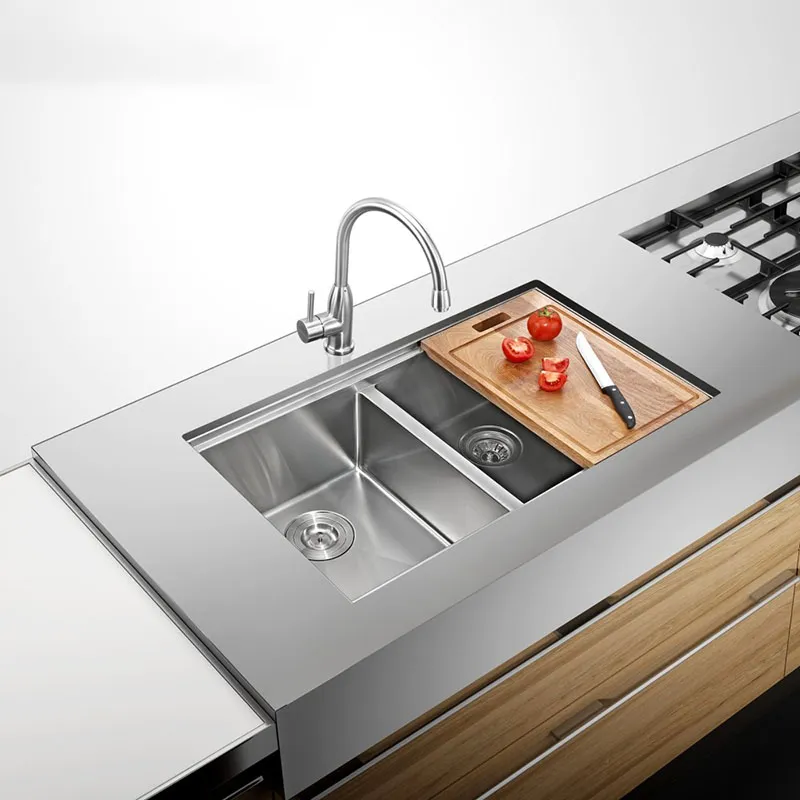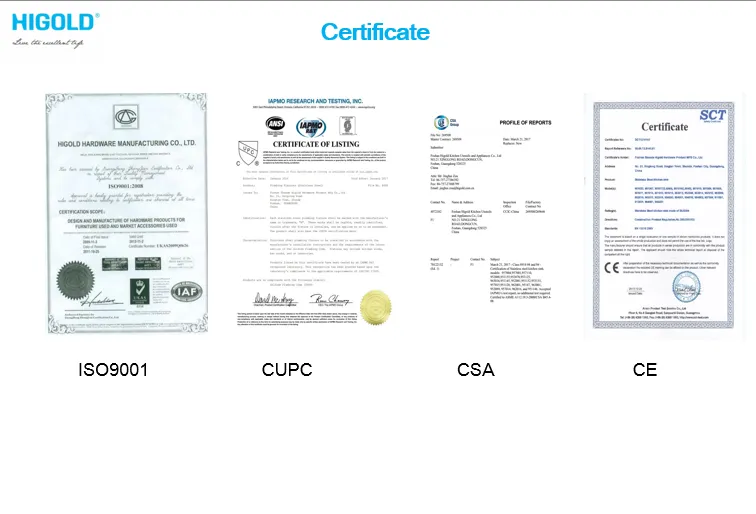As a kitchen sink installation method, undermount sinks have become increasingly popular among homeowners and designers in recent years. Their unique installation method and simple appearance have made them a preferred choice in many modern kitchen designs.
With their increasing popularity, consumers have also come to realize that undermount sinks are often more expensive than other sink types. Many may be curious why undermount sinks are more expensive than traditional sinks.
This article will delve into this question, analyzing the various factors that influence the price of undermount kitchen sinks and helping consumers better understand the value of this kitchen product.

What is an undermount kitchen sink?
An undermount kitchen sink is a type of sink installation characterized by a rim that is completely recessed beneath the countertop, creating a smooth transition with the countertop, leaving no visible edge. Compared to traditional above-the-counter sinks, undermount sinks offer a more streamlined, modern design, with a smooth, seamless seam between the sink and the countertop, making cleaning easier.
What is the installation process for an undermount sink?
Undermount sinks require more complex installation requirements, as the rim must be completely recessed beneath the countertop, making them relatively challenging to install. During installation, a precisely dimensioned notch must be cut into the countertop to ensure a perfect fit. Specialized brackets and glue are also required to secure the sink for long-term stability.
Compared to traditional above-the-counter sinks, undermount sinks require more time, skill, and craftsmanship to install, which significantly increases the price.
Why are undermount sinks more expensive?
1. Complex Installation Process
The installation process for undermount sinks is one of the main reasons for their higher price. Because the rim must be completely recessed into the countertop and seamlessly connected, the installation requires extremely precise alignment between the countertop and sink. Without professional technicians, improper installation and poor sealing can lead to problems, resulting in the sink not functioning properly. Therefore, installing an undermount sink requires more time, skill, and effort, resulting in a relatively high installation cost. Furthermore, the notches of undermount sinks require specialized cutting processes, which can require high-precision cutting tools, making them relatively expensive to produce.
2. Material Selection
The material of an undermount sink is another significant factor affecting its price. Common undermount sink materials include stainless steel, quartz, ceramic, and composite materials. Different sink materials not only differ in appearance, durability, and stain resistance, but also significantly affect the price due to the production process and raw material costs.
For example, stainless steel undermount sinks generally offer greater strength and corrosion resistance, but their production process is relatively simple, making them more affordable. In contrast, quartz undermount sinks require high-quality quartz stone and undergo complex machining processes, resulting in higher production costs and a higher price.
Ceramic and composite sinks, in particular, require more complex production processes, especially ceramic sinks, which not only require high-temperature firing but are also prone to cracking and flaws during the production process, resulting in a higher price.
3. Sink Design and Functionality
The design and functionality of an undermount sink are also significant factors influencing its price. As consumers' demands for kitchen functionality and aesthetics continue to rise, many undermount sinks are incorporating more intelligent and innovative designs. For example, some high-end undermount sinks feature unique flow diversion designs, water barriers, or built-in baskets and drain racks to enhance kitchen convenience. These added features and innovative designs often require increased R&D and manufacturing costs, further increasing the price of the sink.
Furthermore, the size, depth, and shape of the sink also affect its price. Larger and deeper sinks typically require more materials and processing time, resulting in a higher price.
4. Brand and Market Positioning
Undermount kitchen sink prices vary significantly between brands, depending on the brand's market positioning, brand recognition, and product R&D expertise. Major brands often use high-end materials and sophisticated production processes, resulting in higher quality assurance and a longer lifespan, leading to higher prices. Smaller or non-branded sinks are often more affordable, but their quality and craftsmanship may not match those of major brands.
5. After-Sales Service and Quality Assurance
High-quality undermount kitchen sinks typically come with a comprehensive after-sales service system. After purchase, consumers not only enjoy a quality guarantee but also receive free installation and repair services. Because undermount sinks are complex to install and prone to errors, consumers have a high demand for after-sales service. To meet these demands, many high-end sink brands offer more comprehensive after-sales service, which in turn adds an extra cost to the product price.

What are the advantages of undermount sinks?
After understanding the factors that determine their price, consumers naturally wonder whether undermount sinks are truly worth the price. The answer is yes. Despite their higher price, undermount sinks offer many advantages that make them worth the price.
1. Aesthetics
One of the greatest advantages of undermount kitchen sinks is their clean aesthetic. Because the rim is completely recessed beneath the countertop, there's no protrusion between the sink and the countertop, creating a more streamlined, modern look for the entire kitchen. For those who value a visually appealing kitchen, an undermount sink is undoubtedly an ideal choice.
2. Easy to Clean
Undermount kitchen sinks have no protruding rim, creating a smooth transition between the sink and the countertop, eliminating the potential for stains to accumulate around above-the-counter sinks. Cleaning requires only a gentle wipe of the countertop and sink, keeping the kitchen tidy. Therefore, undermount sinks are much easier to clean than traditional sinks.
3. Increased Kitchen Space
Undermount kitchen sinks are typically more compact, maximizing countertop space without sacrificing sink capacity, creating a more spacious and tidy appearance. Especially in modern kitchens, undermount sinks help improve space efficiency.
4. Enhanced Durability
Because undermount sinks require precise installation, they provide greater stability during installation, allowing them to withstand greater weight and pressure. Furthermore, because they are generally made of high-quality materials, they are also more durable and have a long lifespan.
Therefore, the higher price of undermount kitchen sinks is primarily due to factors such as the complex installation process, diverse material options, rich design features, and brand and after-sales service. Despite the higher price, their advantages in aesthetics, ease of cleaning, space utilization, and durability make them a growing consumer choice.
If you're renovating your kitchen and your budget allows, an undermount sink is undoubtedly worth considering. Despite the higher initial investment, the long-term user experience and maintenance make it a worthwhile investment.

How does Higold serve global distributors and retailers?
Higold has built a reliable export network that covers 86 countries. Our team provides fast quotes, low-price promotions, and customized ODM solutions for kitchen sinks and faucets. With professional certifications and award-winning designs, Higold products meet international standards, making us a preferred supplier for global purchasing and brand cooperation.


